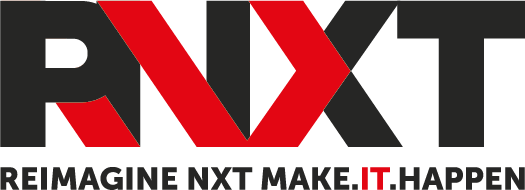Salesforce has been helping organizations in handling their customer databases for more than two decades now. It allows to deliver the right blend of process automation and customization solutions to tailor their services based on the individual requirements of the clients. However, to extend the functionalities of the CRM giant and provide a seamless customer, employee, and delivery experience, organizations need to merge with other suitable platforms. And this can be made possible with the help of Salesforce Integrations. MuleSoft provides the most widely used integration platform for connecting SaaS & enterprise applications in the cloud and on-premises. MuleSoft’s integration platform not only enables the access to data across legacy systems, cloud apps and devices but also makes smarter and faster decisions and offer highly connected experiences for end-users. MuleSoft’s Anypoint Platform is now a part of the Salesforce Integration Cloud, which is a unified, single solution for iPaaS and a full life-cycle API management. With its major components like Anypoint Security, Design Center and Management Center, it is easier for organizations to synchronize data between all their systems. It also helps speed up and improve the application development process, unlock dislocated data, and maintain security while scaling. Any organization approaches integration of applications based on five patterns. These patterns are the most logical sequence of steps to solve specific types of integration problems.
The five patterns are as discussed below:
1. BROADCAST:
Broadcast pattern is act of moving data from one source system to many target systems in a continuous real-time or near-real-time flow. Data flow is usually transactional and one way sync in nature where target system will only receive the data and don’t provide response to the source system. A broadcast pattern should be highly reliable to avoid losing critical data in transit. For example, if any sales happen in the Customer portal, then CRM, Inventory and Analytics applications should be updated in real time. Target systems don’t have to send any response back to the Source system. The broadcast pattern allows for the immediate transfer of customer data between systems, whether from two instances of Salesforce or between Salesforce and other systems.
2. MIGRATION:
Data migration is a data integration pattern that permanently moves a particular set of data from one system to another. Migration pattern is also known as unidirectional migration pattern as it only works for transferring data from source system to target system and not vice-versa. Before data migration occurs, data is accommodated within a source system. The data migration process includes choosing, preparing, extracting, and transforming data. Extract transform load is often associated with the migration data integration pattern. There are numerous Salesforce integration scenarios that may require a migration pattern, including migrating data from a legacy CRM system to Salesforce or from one Salesforce organization to another.
3. BIDIRECTIONAL SYNC:
The Bi-directional sync data integration pattern combines two data sets in two different systems. Bi-directional sync allows two different data sets to exist independently while also acting like one data set. Bi-directional sync data patterns help those companies with multiple systems and business processes occurring simultaneously. This pattern eradicates the load of businesses needing to manually address various inconsistencies in the data. Business processes are optimized by the high data quality and real time data accessibility that bi- directional sync supports.
An example of bi-directional sync could be a Financial Services firm that has different systems for different business processes. Bi-directional sync would update different systems with the same real time data shared. With constant real time data accessibility, the financial services company could keep systems specific for alternative business processes.
4. CORRELATION:
The Correlation data integration pattern identifies the intersection of two data sets and incorporates bi-directional synchronization. First, the correlation data integration pattern identifies where two data sets intersect. Then, bi-directional sync is performed for the module occurring in both systems. Since bi-directional sync pattern is only applied to the relevant intersecting data, Correlation avoids the need for any unwanted data storage This pattern is useful for cases in which two systems want to share data only if they both have records pertaining to the same items. An example of Correlation data integration could be between two different financial services locations. In this situation, correlation data integration allows the separate locations to share their customer data. When the different systems recognize the intersected data between the locations, they can then use bi-directional synchronization. As a result of which both financial services locations are granted real time data access.
5. AGGREGATION:
Aggregation is the simplest way to extract and process data from multiple systems into one application or report in real time. The developers use an integration template built on an aggregation pattern and query multiple systems on demand and merge all data sets to use data however and whenever needed. For example, creating a dashboard that pulls data from multiple Salesforce instances, or updating Salesforce with data from multiple back-end systems, or building APIs that report across multiple systems. There are several factors that affect the integration pattern, and the integration pioneers must choose the right approach to ensure a successful implementation. And, when it comes to integrating with Salesforce, there are several considerations, such as:
- Staying within the API limit which shouldn’t exceed 15000 API calls/day
- Understanding if the solution requires migration of data into Salesforce or data virtualization
- Is the integration business critical and does the response need to be processed in real time or near real time?
- Is the size of the payload small or large?
- What if the external system is down and the guaranteed delivery needed
- The possibility to check if remote systems follow Salesforce Contract
- Declarative as to if we want to integrate without writing any code in Salesforce or how
MuleSoft Connectors for Salesforce
MuleSoft Salesforce Connector accelerates your Salesforce integrations across Sales Cloud, Service Cloud, Salesforce Platform. It gives access to all Salesforce entities to business process automation to maximize investments in services and solutions, increasing revenue, and serving your customers better. The MuleSoft connectors that are available today for integrating with Salesforce:
- Salesforce (Core) Connector
- Salesforce Einstein Analytics Connector
- Salesforce Marketing Cloud Connector
- Salesforce Commerce Cloud B2C Data Connector and
- Salesforce Commerce Cloud B2C
MuleSoft Accelerators for Salesforce clouds
MuleSoft Accelerators enable businesses to implement critical integration use cases for Salesforce clouds, faster and easier than ever before. These solutions include production-ready APIs, connectors, and integration templates that unlock critical data from external systems The following accelerators are built for the Salesforce clouds:
- MuleSoft Accelerator for Salesforce Service cloud
- MuleSoft Accelerator for B2C Commerce cloud
THE FINAL WORD
Salesforce integration using MuleSoft establishes an IT architecture beyond systems, which enables successful achievement of business goals in a shorter payback period. Salesforce integration allows developers to enhance the functionality of Salesforce and help users save their time and efforts in using tools pertaining to different platforms. Many businesses have found great reliance in the Salesforce solution because of their ability to bring their other systems in unison.

